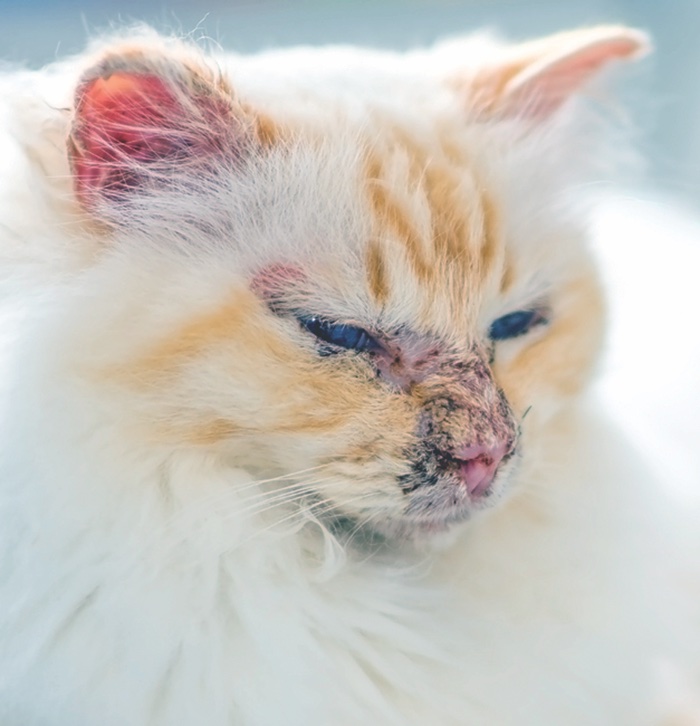Q: My 4-year-old cat has swelling and bacterial infections in her foot pads/nail beds, and I am using chlorohexidine. My veterinarian says it’s an autoimmune disease with no treatment. Do you know of anything to help my cat?
A: I am sorry to hear of your cat’s problems, and perhaps a review of common autoimmune diseases of the feline paw/footpad/nail bed would help.
Autoimmunity is a condition in which the immune system mistakenly labels proteins that are normal components of the body as foreign and mounts an immune response against them, which can cause swelling, itchiness, and pain. Basically, this is an example of how an amazing system that protects us from invading organisms can go awry.
Pemphigus is a group of autoimmune diseases in which autoantibodies against normal components of the skin are produced. The deposition of these autoantibodies in the spaces between microscopic skin cell layers causes separation and disintegration of the various layers of the skin, resulting in ulceration and crusting of the skin, combined with the formation of fluid-filled sacs, cysts, and pus-filled lesions.
There are three types of pemphigus that affect cats: pemphigus foliaceus (PF), pemphigus erythematosus (PE), and pemphigus vulgaris (PV). These are distinguished by how deeply autoantibodies are deposited in the skin and by the specific areas of the body that are affected. Generally, PE (usually affects the skin of the head, face, and footpads) is the least afflictive and results in the formation of blisters, crusting, scaling, redness, and itchiness of the affected areas. PV (gums, lips, underarm, and groin) is the most severe, resulting in the formation of deep ulcers, blistering, and crusting of the skin. The severity of PF lesions is somewhat between those seen with PE and PF and occurs on the head, ears, and footpads. Secondary bacterial infection is possible.
Plasma cell pododermatitis (PCP) can affect the foot pads of cats. In this condition, inflammation of the foot pads is caused by the accumulation of plasma cells, which are activated white blood cells that produce antibodies. Some studies suggest that FIV infection may predispose cats to PCP.
A definitive diagnosis of pemphigus or PCP requires a biopsy of the affected areas. Bacterial culture of affected areas can be useful to identify bacteria species that may cause secondary infections and to guide antibiotic choice to treat these.
The basic principle behind treating autoimmune skin diseases is suppression of the immune system using either corticosteroids, cyclosporine, chemotherapeutic drugs (severe cases), or antibiotics that are believed to have some immune-modulating properties.
I suggest discussing a consultation with a veterinary dermatologist with your veterinarian if he/she feels this would be helpful.




